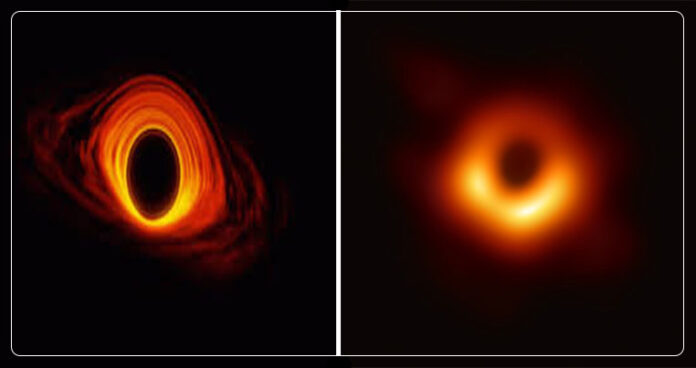The first photo of the infamous Milky Way black hole has finally made its way on the internet. It gives the first direct glimpse of a monster sitting right at the heart of Earth’s galaxy. The image was taken by the Event Horizon Telescope (EHT), an international collaboration of 8 radio telescopes. It is the second black hole in the universe for which an official image is available.
The same team also produced the very first image of a black hole in a distant galaxy called Messier 87 (M87) in 2019.
Milky Way Black Hole is 4 billion Times Bigger than the Sun
Radioastronomers identified the existence of the Milky Way black hole in 1974 based on the discovery made by American physicist Karl Jansky in 1933. He noted that the center of the Milky Way galaxy was emitting radio waves. At that time, the radio source was too dim to know for sure it was a black hole. Decades of research finally confirmed that it was a supermassive object. Scientists calculated that it was 4.15 million solar masses or 4 million times the mass of the sun after tracking how stars were orbiting around it. It was strong enough evidence to conclude that it was indeed a black hole. Residing 26,000 light-years away from Earth, Sagittarius A* is more elusive than expected.
The Challenging Research
Astronomers believe that black holes exist in the center of all galaxies in the universe. However, capturing their image is a daunting task as no light or matter can escape them, making them practically invisible. They are also surrounded by superheated gas and dusk which makes it nearly impossible to take any picture. However, in the 1990s a team of astronomers including German Dutch professor Heino Falcke realized that a black hole would have a shadow large enough to be pictured with tiny radio waves. Research revealed that doing so would require a telescope as big as Earth.
So, astronomers applied a technique called interferometry which involved pointing multiple distant telescopes at the same object simultaneously and acting as one big telescope. They began attempting to observe the Milky Way black hole with this “virtual telescope” also known as an interferometer. At first, they could only see a blurred spot but then the rest of the world pitched in and refined the techniques. Then in 2015, EHT was born, covering longer distances to solve the puzzle of Sagittarius A*.
Astronomers Were Hesitant to Admit Before
There were always theories and speculations about the Milky Way black hole in the science world. Scientists have long argued that a supermassive black hole was hidden inside Milky Way’s bustling center.
This theory can explain why something chaotic is always going on inside the cosmic neighborhood like stars exploding all the time. However, there are some unexplained events as well which were attributed to the work of Sagittarius A*. According to reports, dozens of runway stars escaped the Milky Way in 2015 at high speed. Then in 2019, another star was reportedly “slingshotted” out of the Milky Way. It was heavily debated that a black hole was possibly flinging out these stars.
But no one was ready to say it for sure. Even the astronomers Reinhard Genzel and Andrea Ghez, who jointly won a Nobel Prize in Physics for their work on Sagittarius A* in 2020, did not conclude it was a black hole. Their discovery was cited as “a compact supermassive object at the center of our galaxy,” and not a “black hole.”
It is Different than M87 Black Hole
The latest image might seem similar to the one of the M87 black hole released back in 2019. But the 2 giants are very different from one another. M87* is arguably one of the largest black holes in the universe. Its size is reportedly 7 billion solar masses. The movement of material around its event horizon is very slow so its picture can be taken easily unlike the Milky Way black hole, where material orbits faster. On the other hand, Sagittarius A* consumes only a fraction of the material. Astronomers explained with an example that if Sagittarius A* was a person, it would only eat a single grain of rice in million years. In contrast, M87 is much more active and eats 900 Earth masses per day.
Answer to Most Existential Questions
It is an exciting discovery for astrophysicists, who will finally how black holes grow by consuming material. It might also help answer an open question of whether the galaxy or a black hole came first. There is still a lot more stuff to be learned about Sagittarius A* but the new image can prove to be a great deal for science. Laws of physics can be pushed to their limits at Black holes, which makes it perfect to further study the theories of gravity, magnetism, and the behavior of matter in extreme environments. Other than that, people also shared various memes just like they did with M87’s picture.


